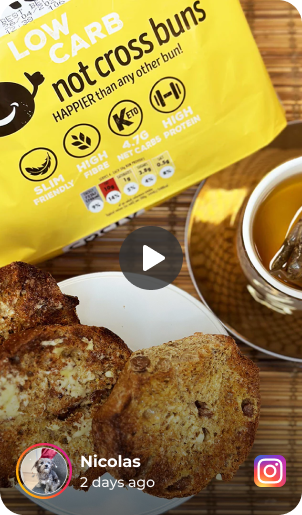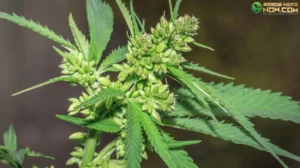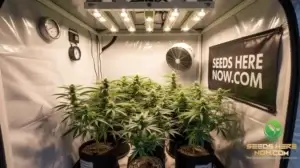The Government’s War on Hemp: How a Shady Bill Just Killed a $28 Billion Industry

Look, I’m just going to say it. What just happened in Congress is a whole bunch of crap. The day after Veterans Day—a day we pretend to honor the people who fought for this country—the government stabbed every single one of them in the back.
If you’re one of the millions of Americans, including countless vets, who rely on CBD, CBG, or other hemp products for wellness, anxiety, or to stay off harder stuff, Congress just told you to pound sand. They did it in the slimiest way possible—by ramming a provision into a must-pass spending bill to end the government shutdown. No debate. No transparency. Just a backroom deal.
That’s my take. But you’re here for the facts. So here’s what’s really going on, and here’s what you damn well need to know.
TL;DR: They Just Banned Hemp
No time? Here’s the hit. While everyone was distracted by the longest government shutdown in U.S. history, Congress quietly included a few paragraphs in the emergency funding bill (H.R. 5371).
These paragraphs, which President Trump signed into law on November 12, 2025, do the following:
- Redefine “hemp” to make it almost impossible to produce or sell
- Ban “total THC,” which now includes THCA, making all THCA flower illegal
- Ban all “synthesized” cannabinoids, a direct shot at the Delta-8 market
- Add a “poison pill”: a limit of 0.4 milligrams of THC per container
That last one is the kill shot. A typical 30-milliliter bottle of full-spectrum CBD oil—the non-intoxicating stuff your grandma might use—has way more than 0.4 milligrams of trace THC. Let’s be clear: this isn’t a limit. It’s a fantasy. As a plant scientist, I can tell you the plant itself naturally produces more than this in its trace compounds. They didn’t regulate hemp—they just made nature illegal. This new rule effectively bans 95% to 100% of all consumable hemp products on the market.
Surprise! You’re a criminal. Again.
First, the Facts: How This Dirty Play Went Down
You’re right to be pissed off. This wasn’t legislation; it was a backroom hit job. Here’s the play-by-play.
The government was shut down. Politicians were desperate to reopen it. This created the perfect cover. They took a must-pass emergency spending bill—in this case, the Agriculture Appropriations Act—and attached an unrelated provision called a “rider.” Riders are for policies that are too unpopular to pass on their own merits.
And boy, was this unpopular. The provision was buried deep in the agreement, slipped into the bill, and revealed at the 11th hour. The industry was completely blindsided.
“It Wasn’t Put to a Vote”
You are 100% correct. There was no standalone vote on killing the $28 billion hemp industry.
In fact, they actively avoided a vote. Sen. Rand Paul (R-Ky.), who actually gives a damn about his state’s farmers, got on the Senate floor and tried to stop it. He called it an “attack on Kentucky farmers” and filed an amendment that would have stripped this poison pill language out of the bill.
So what did Senate leadership do? They employed a slimy parliamentary tactic known as “tabling the amendment.” This move sets aside the amendment without a formal up-or-down vote. It allowed senators to kill the hemp industry without ever leaving their fingerprints on the murder weapon. They just had to vote “yes” on the popular “reopen the government” bill.
It’s a complete and total clusterfuck.
A Quick Trip Back: How We Got Here (The 2018 Farm Bill)
And here’s the sick joke: The 2018 Farm Bill was a landmark piece of legislation. For the first time since the 1970 Controlled Substances Act, hemp was de-scheduled.
It defined legal “hemp” as any part of the Cannabis sativa L. plant containing “not more than 0.3% on a dry weight basis” of one specific molecule: delta-9-tetrahydrocannabinol (THC).
This specific wording created two “loopholes” that lawmakers now claim they never intended:
- THCA Flower: The law only limited delta-9 THC. It said nothing about THCA, its non-intoxicating precursor. Since THCA only converts to delta-9 THC when heated (decarboxylation), THCA flower was technically legal hemp.
- Synthesized Cannabinoids: The law legalized all “derivatives, extracts, and cannabinoids” from hemp. This allowed processors to extract plentiful, legal CBD and chemically convert it into “minor” cannabinoids like Delta-8 THC.
And the deepest, most bitter irony of all? The man who championed the 2018 bill and celebrated it as a win for farmers—Sen. Mitch McConnell—is the same man who just authored and slipped this 2025 ban into the spending bill to “correct” his “legacy.”
The Big Push: Why This Is a Stab in the Back for Vets and Farmers
Let’s be clear. The 2018 Farm Bill didn’t just create a market for intoxicating “loophole” products. It triggered a policy sea change that unleashed a massive, multibillion-dollar American industry for agriculture, textiles, and wellness.
This ban isn’t just closing a loophole; it’s also addressing a broader issue. It’s carpet-bombing an entire $28 billion to $30 billion economic sector.
The Wellness Market (CBD and CBG)
This is the part that makes me sick. The big push you mentioned was for therapeutic, non-euphoric cannabinoids. This ban kills them all.
CBD (Cannabidiol): Became a household name for a reason. Studies and overwhelming anecdotal reports back its favorable safety profile and its use as a potent anti-inflammatory and an effective tool for managing anxiety.
CBG (Cannigerol): The next big thing. Research has shown CBG is a promising agent for neuroprotection and fighting inflammation.
Who uses this stuff? Millions of regular people. And as you pointed out, it’s a critical tool for our nation’s veterans. Retailers and advocates have confirmed that military veterans turned to these hemp alternatives to manage anxiety, chronic pain, and to reduce or discontinue their use of prescription medications and opioids.
Top veterans groups even warned Congress that this ban could slam the door shut on medical research.
And what was Congress’s response? To pass the ban the day after Veterans Day. It’s disgusting.
The Farmers and Industrial Growers
This isn’t just about gas station gummies. This ban pulls the rug out from under thousands of American farmers who invested everything based on the 2018 law.
- U.S. Farm-Level Value (2024): $445.4 million (a 40% increase from 2023)
- U.S. Industrial Market (Textiles, etc.): Valued between $1.63 billion and $2.32 billion
- Total Jobs: The consumable hemp industry alone supports more than 300,000 jobs
This ban just handed a death sentence to those farmers and 300,000 workers—all to fix a problem that could have been solved with simple regulation.
So What Happens Now?
The ban gives the industry a one-year runway before it’s fully enforced, setting a deadline of November 2026.
Industry groups are vowing to work to reverse the ban. But let’s be real—prohibition doesn’t work. This won’t make $28 billion in consumer demand just disappear. It will push it from a gray market (that was at least state-regulated and taxed) into a 100% unregulated, illicit black market.
This ban doesn’t protect anyone. It empowers cartels, kills small businesses, and takes away legitimate wellness products from the people who need them most.
As for us? We deal in craft genetics. We believe in this plant. But this move shows just how fragile all of this is.
But let me be clear about something. This is what I do. We’re Seeds Here Now, and we’ve been serving the community since 2010. We’re the longest-operating seed bank in the United States. We were doing this long before the 2018 bill, and we’ll continue to do so long after 2026.
I’ve been here forever, and I’m going to be here forever. If you have a situation, I’ll be here to help. We’ve always been here. We’re always going to be here.
The best time to buy seeds was yesterday. You can still get it taken care of today, but it may not be here tomorrow.
Hemp Ban 2025: FAQs
1. What was the 2018 Farm Bill’s legal definition of “hemp”?
The 2018 Farm Bill defined hemp as the plant Cannabis sativa L. and any part of that plant, including all derivatives and cannabinoids, with a delta-9 tetrahydrocannabinol concentration of not more than 0.3% on a dry weight basis.
2. When was the new hemp ban enacted, and what was the legislative vehicle used?
The ban was passed in November 2025 and signed into law on November 12 of the same year. It was not a standalone bill, but a rider (Section 781) inserted into the Agriculture, Rural Development, Food and Drug Administration, and Related Agencies Appropriations Act, which was part of a “minibus” spending package (H.R. 5371) aimed at ending the government shutdown.
3. What are the three new restrictions imposed by the 2025 ban?
The ban redefines hemp by (1) changing the 0.3% cap to “total THC,” which now includes THCA; (2) banning any cannabinoids that were synthesized or manufactured outside the plant; and (3) imposing a new cap of no more than 0.4 milligrams per container of total THC or any other cannabinoids with similar effects.
4. What is the “poison pill” provision, and what is its expected impact?
The “poison pill” is the 0.4 milligram per container cap on total THC. Industry analysts and legislators, including Sen. Rand Paul, warn that this cap will eradicate 95% to 100% of all existing hemp products, including non-intoxicating full-spectrum CBD oils, effectively destroying the $28 billion consumable hemp industry.
5. Was there a direct, standalone vote on the 2025 hemp ban?
No. There was no standalone vote on the hemp ban provision. Sen. Rand Paul filed an amendment to remove the language, but Senate leadership, led by Sen. Mitch McConnell, used a parliamentary procedure called “tabling the amendment” to set aside Paul’s proposal without a formal up-or-down vote.
6. Who championed the 2018 bill, and who championed the 2025 ban?
Ironically, Sen. Mitch McConnell (R-Ky.) was the primary champion of the 2018 Farm Bill, which legalized hemp, viewing it as a new crop for farmers. He was also the primary author and proponent of the 2025 ban, which he added to the appropriations bill to close the loophole created by his 2018 bill.
7. What was the “loophole” in the 2018 Farm Bill?
The loophole was that the 2018 law only restricted the concentration of delta-9 THC. It did not restrict THCA (the non-intoxicating precursor that turns into THC when heated) or cannabinoids synthesized from legal hemp CBD, such as Delta-8 THC. This allowed intoxicating products to be sold legally as hemp.
8. How large was the U.S. consumable hemp industry before the ban?
The U.S. consumable hemp industry, including CBD and Delta-8, was valued at approximately $28 billion to $30 billion and supported more than 300,000 jobs.
Suggested Articles
;)
;)
;)





 02 Dec 2025
02 Dec 2025  13 min read
13 min read


 November 14, 2025
November 14, 2025 


RESPONSES (0)
No responses yet. Be the first to respond!